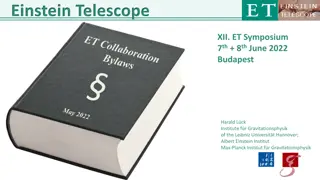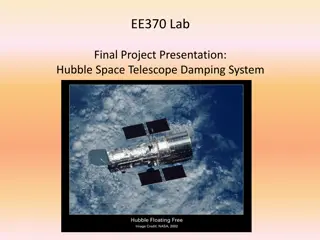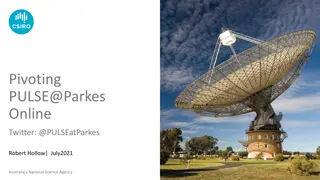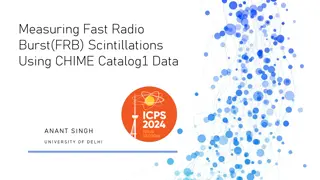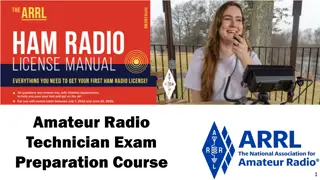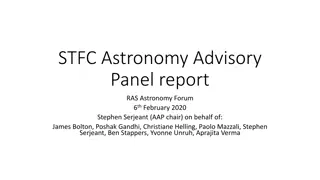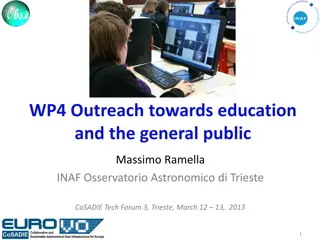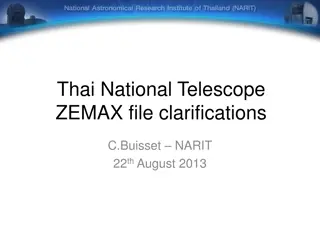Understanding Radio Telescope Sensitivity and Resolution in Radio Astronomy
This lecture covers the concepts of radio telescope sensitivity in detecting small temperature variations from the sky, including factors such as radiometric sensitivity, antenna noise temperature, receiver system noise, and more. Additionally, it touches upon the resolution capabilities of radio telescopes and mentions notable observatories and centers involved in radio astronomy research.
Download Presentation

Please find below an Image/Link to download the presentation.
The content on the website is provided AS IS for your information and personal use only. It may not be sold, licensed, or shared on other websites without obtaining consent from the author. Download presentation by click this link. If you encounter any issues during the download, it is possible that the publisher has removed the file from their server.
E N D
Presentation Transcript
Lecture 12: Square-Kilometre Array 3 1. Radio Telescope Sensitivity 2. Resolution 3. Field of View 4. Spectrometer 5. Radio Astronomy Frequencies 1
1. Radio Telescope Sensitivity (1) Radiometric sensitivity - Radio telescopes measure radio emssions from the sky. - RMS receiver output fluctuation (= radiometer noise temperature) - SNR = radiometer equation: minimaize Tto detect small TSRC 2
1. Radio Telescope Sensitivity (2) = : antenna noise temperature (K) SRC T T A : receiver system noise temperature (K) T sys = + + + T T spill T loss T T sys sky rec : receiver bandwidth (Hz) B : received signal integration time (s) 3
1. Radio Telescope Sensitivity (8) /(2 ) SRC T T S A kT k S A S N v e v k T e = = = 2 RMS RMS RMS 9
2. Resolution (1) Resolution 1.22 = D 12
2. Resolution (2) - HSP (Hubble Space Telescope) - MMA (Millimeter Array) - NAIC (National Astronomy and Ionosphere Center) - NRAO (National Radio Astronomy Observatory) - NRL (Naval Research Laboratory) - SAO (Smithsonian Astronomical Observatory) - 1 arcsecond = 1/3600 degree = 1" - 1 arcminute = 1/60 degree = 1' - 1 au = 1.496 108km - 1 pc = 1/tan(1") au = 3.09 1013km - 1 Jy = 10-26W/m2Hz 13
2. Resolution (3) VLBI - Combine reflector antennas placed all over the world - Large receiving area: large reflector antenna high sensivity - High frequency: high resolution, high sensivity at a specified antenna size, 1-10 GHz - Long baseline: high resolution - Sensitivity: 1 Jy = 10 32W/m2/Hz - Resolution: 10 as 14
2. Resolution (4) VLBI Signal Processing - Precision timing for path leng compensation: atomic clock, data recorded at antenna - Calibration for phase (time delay) errors - Resolution: 1/1.2 109rad = 4.8 10 8deg = 17 micro-acrsecond ( as) 15
2. Resolution (5) VLBI Signal Processing 16
2. Resolution (5) VLBI Applications - Radio astronomy: super-high resultion imaging of the sky - Spacecraft tracking - Geodesy: earthquake monitoring 17
3. Field of View (1) FoV (Field of View) - Single dish: = = 1.22 / D - Array of telescopes: Interferometry for synthetic aperture. FoV determined in the correlator software - Phased array: Multiple FoVs for a large sky coverage. Simultaneous multiple users for high-speed sky survey - Dish with a focal plane array: = W / F = Detector effective area / Focal length 18
3. Field of View (2) Wide-field VLBI Imaging - FoV: about an antenna beamwidth - Improved data analysis technique + Increased data storage size + Enhanced computer processing power 19
4. Spectrometer For material identification 20
5. Astronomy Frequencies Atmospheric Absorption 21
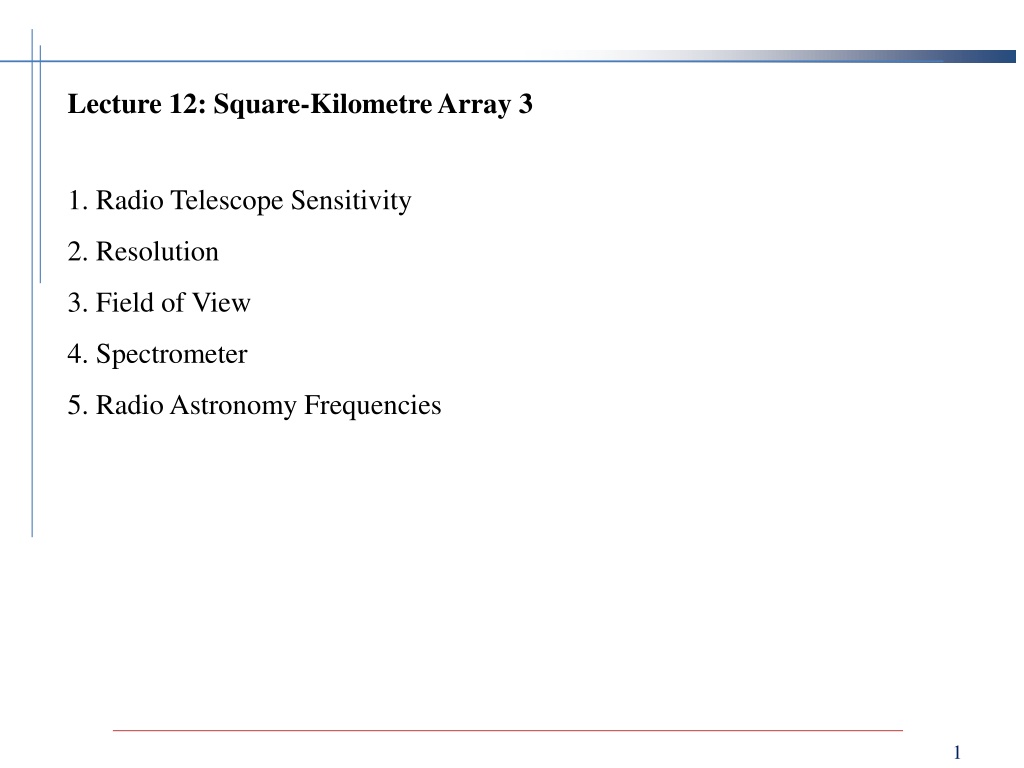

![get⚡[PDF]❤ The Hubble Space Telescope: From Concept to Success (Springer Praxis](/thumb/21514/get-pdf-the-hubble-space-telescope-from-concept-to-success-springer-praxis.jpg)
